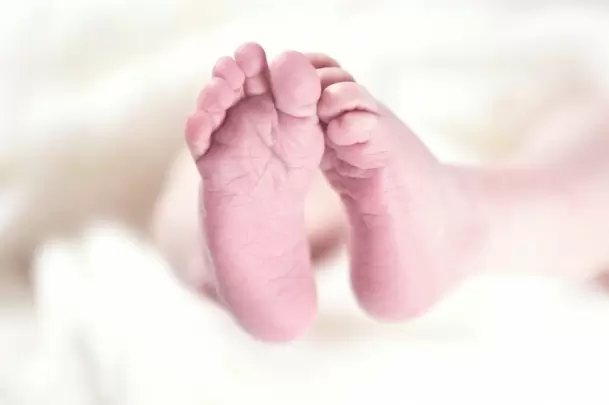Know why newborns kick, wiggle, and move more
New Delhi
27-December-2022

Photo : IANS
Right from birth, babies start to kick, wiggle and move, and the purpose behind such movements is the ability to control muscles, movement and coordination, which, according to researchers, aid to the development of their "sensorimotor system".
Based on the babies' random exploration, researchers discovered patterns of muscle interaction that would later allow them to perform sequential movements.
"Our study focused on muscle activity and sensory input signals for the whole body. By combining a musculoskeletal model and neuroscientific method, we found that spontaneous movements, which seem to have no explicit task or purpose, contribute to coordinated sensorimotor development," said Project Assistant Professor Hoshinori Kanazawa from the University of Tokyo.
As part of the research, the team recorded the joint movements of 12 healthy newborns (less than 10 days old) and 10 young infants (about 3 months old) using motion capture technology.
In the next step, they analysed the baby's sensory input signals and muscle activity with a whole-body, infant-scale musculoskeletal computer model.
Finally, they analysed the spatiotemporal (both space and time) features of the interaction between the input signals and muscle activity using computer algorithms.
Watch This TWL Video
"We were surprised that during spontaneous movement, infants' movements 'wandered' and they pursued various sensorimotor interactions. We named this phenomenon 'sensorimotor wandering'," said Kanazawa.
"However, our results implied that infants develop their own sensorimotor system based on explorational behaviour or curiosity, so they are not just repeating the same action but a variety of actions. In addition to this, our findings provide a conceptual linkage between early spontaneous movements and spontaneous neuronal activity," he added. - IANS
More Headlines
Karnataka Withdraws CID Probe in Ranya Rao Gold Smuggling Case
New Kerala Guv Strikes Cordial Tone, Hosts CM Vijayan And FM Sitharaman In Delhi
Digital Payments Surge in India: 18,120 Crore Transactions in FY24-25
Weather Dept Predicts Heavy Rains In Several TN Districts
Chitra Subramaniam’s Book Boforsgate Exposes Arms Trade, Corruption, and Political Intrigue
Karnataka Withdraws CID Probe in Ranya Rao Gold Smuggling Case
New Kerala Guv Strikes Cordial Tone, Hosts CM Vijayan And FM Sitharaman In Delhi
Digital Payments Surge in India: 18,120 Crore Transactions in FY24-25
Weather Dept Predicts Heavy Rains In Several TN Districts
Chitra Subramaniam’s Book Boforsgate Exposes Arms Trade, Corruption, and Political Intrigue










